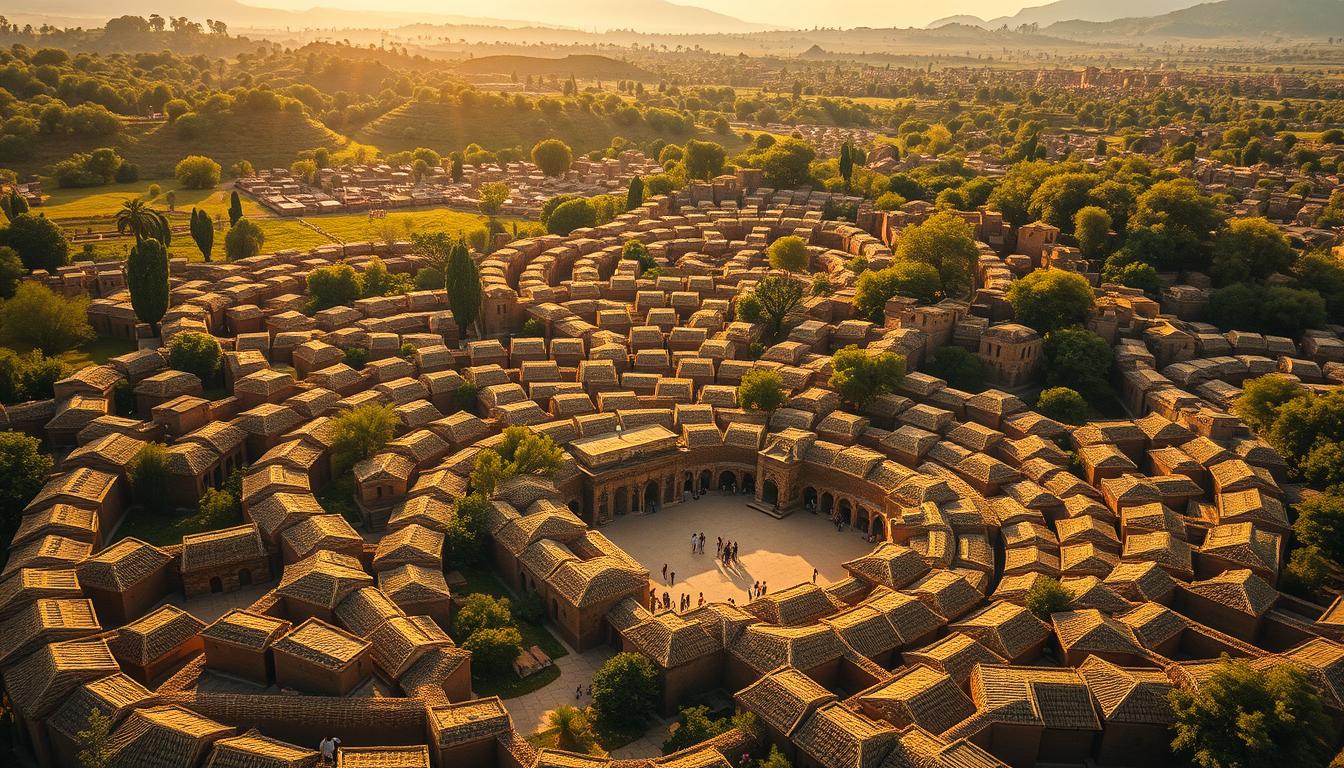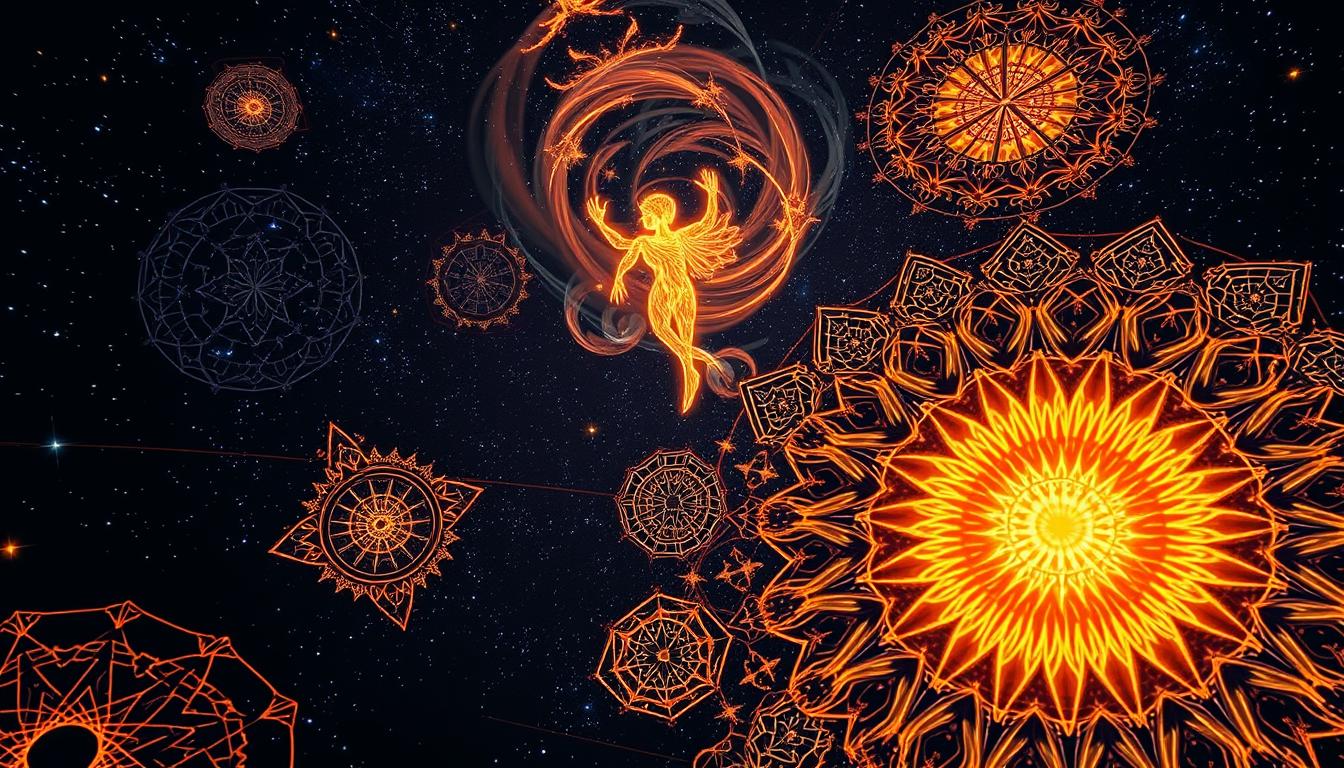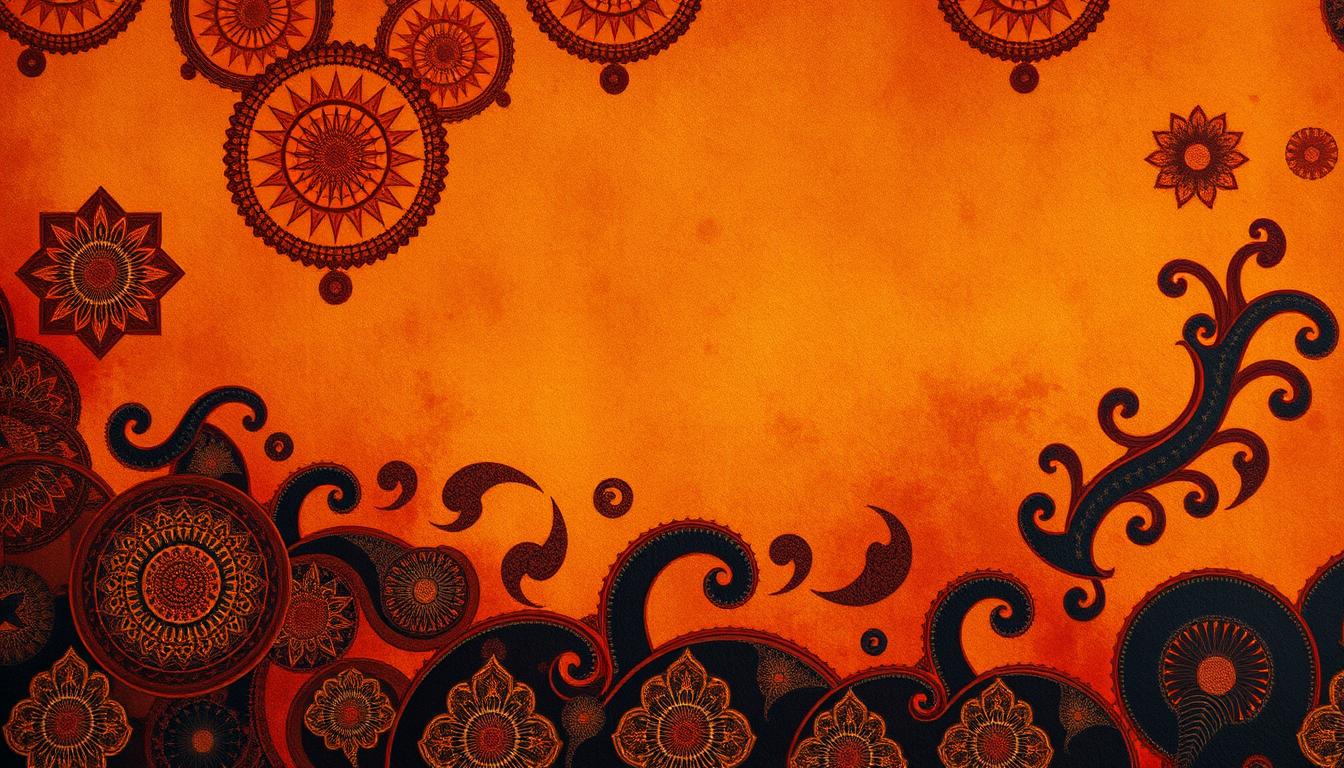Fractal symbolism offers an amazing way to understand indigenous language and culture. It’s all about repeating patterns on different scales. These patterns show the close connections within indigenous communities.
Languages mirror these patterns, showing how deep traditions and identities are. We’ll look at how language symbolism links to fractal patterns in indigenous life experiences.
The Nature of Fractals and Their Cultural Significance
Fractals are complex shapes made up of patterns that repeat at different sizes. They come from math but show us how to see the world in a special way. Not only are fractals mathematically interesting, but they also mean a lot in different cultures. This especially shows in native beliefs, where fractals are linked to nature.
In many native traditions, fractals symbolize how everything in nature is connected. You can see fractal patterns in trees, rivers, and leaves. These shapes show how living things and their surroundings are linked. These patterns are more than just pretty; they tell us about balance and harmony in nature. That balance is key for people’s cultures and for nature to thrive.
Math helps us get why these patterns repeat in such a cool way. It shows that complex designs come from simple rules. Indigenous stories use these ideas, putting them into tales about nature. So, fractals aren’t just nice to look at. They’re a way for communities to share how they see and connect with the world.

Understanding Indigenous Languages and Their Contexts
Indigenous languages are a rich source of human expression. They reflect the diverse cultures they come from. These languages not only help in communication but also hold the unique histories and identities of the people who speak them.
The variety of languages among indigenous communities shows complex structures and sounds. This variety shows how language displays cultural details.
Indigenous languages hold knowledge deeply connected to the environment. For example, words for local plants and animals often show deep ecological knowledge. Books like “Dying Words: Endangered Languages and What They Have to Tell Us” highlight the fragile state of these languages. They stress the importance of keeping these languages alive to preserve cultural identities.
Studying these languages helps us value the many viewpoints within our world. By understanding the importance of indigenous languages, we gain insight into their cultural settings. This helps us embrace a wider view of the world.
The Interplay Between Language and Symbolism
Language and symbolism are deeply tied in indigenous cultures. They share stories, values, and histories. Through language, people share complex ideas and feelings. This connects the past with today.
Storytelling comes alive with metaphors and images. It keeps culture strong. Stories show what communities value and believe. They include symbols that show each group’s view of the world.
These stories get richer with each telling. Rituals and customs show the symbols in their languages. Learning about this connection helps us understand cultural identities better.
Fractal Symbolism in Indigenous Language and Symbolism
Fractal symbolism is deeply rooted in indigenous languages and stories. It connects strongly to cultural identity. This section looks at how fractal patterns are found in indigenous narratives and symbols. It shows the close links between stories and math.
Examples of Fractal Patterns in Indigenous Narratives
Indigenous stories often include themes that repeat like fractal patterns. These stories pass down important lessons through generations. Some examples are:
- Cyclical journeys showing time and seasonal shifts.
- Repeating character types, similar to mathematical fractals.
- Stories of nature that reflect real natural events.
Mathematical Concepts Reflected in Cultural Symbols
Cultural symbols, such as totems and complex weavings, show math and art blending in indigenous cultures. These symbols display geometric ideas seen in fractals, like:
- Repeating designs that add depth to visual stories.
- Math ratios that shape the patterns in art.
- Meanings that show a connection to nature, based on math order.
The Role of Language in Cultural Identity
Language is key in creating cultural identity among indigenous people. It’s more than a way to talk; it holds the stories and history that shape a community. Every word and phrase has a deep meaning, linking past and present generations.
Language shows how complex cultural identity is. Through stories told out loud and age-old tales, communities share their views and values. This storytelling ensures that their culture and beliefs live on, reaching the young ones.
It’s crucial to revive endangered languages to keep cultural identity alive. Bringing back these languages strengthens community bonds and helps people feel like they belong. Learning and using these languages builds community strength and keeps important traditions going. This adds to the richness of a culture.
Fractals in Nature and Their Reflection in Indigenous Art
Fractals in nature are fascinating, showing the complex beauty of our world. Indigenous art uses these patterns, inspired by nature’s landscapes. These artists look to wildlife and plants for inspiration. They see the beauty in nature and bring it into their designs. This connects us to the world and shows the power of nature-inspired designs.
Design Patterns Inspired by Natural Landscapes
Indigenous artists use nature’s fractals in their work. They copy the symmetry and repetition seen in nature. Their art includes:
- Floral designs that replicate the branching patterns of trees and flowers.
- Animal motifs that exhibit the intricate textures found in fur and feathers.
- Geometric shapes reflecting the contours of hills and valleys.
Indigenous art celebrates our connection to nature. It makes us feel like we’re part of the natural world. “Wisdom Sits in Places” by Basso talks about this. It shows how art helps us understand where we come from and our culture.
Revitalization of Indigenous Languages through Symbolic Expressions
The work to bring back indigenous languages is key in keeping culture alive. Many groups use symbols to link language, art, and stories. This makes native languages exciting for young people today.
Programs often mix traditional art with education, like painting and performances. They teach language and share cultural stories at the same time. By doing this, people can better understand where they come from. It also makes them care more about their language.
Guides like “Reclaiming Indigenous Languages” show how important symbols are in this work. Symbols help people connect with their culture and confirm who they are. This makes learning indigenous languages more meaningful. It brings a feeling of pride and a sense of fitting in with their community.
This approach does more than save languages. It also adds to the cultural richness of indigenous communities. It makes sure their unique voices are heard today and tomorrow.
Case Studies: Indigenous Communities and Their Unique Symbols
Looking into indigenous communities shows us their unique symbols, which share deep meanings. These symbols often follow fractal principles. The stories behind them let us see how nature, spirituality, and community shape their world.
The Navajo Nation uses symbols that tell rich stories of their land ties. Their art includes patterns that symbolize spiritual beliefs. For example, the four cardinal directions highlight harmony and balance in their worldview.
Similarly, the Western Apache have their own symbols that show how they see the environment. Their art showcases elements of nature and the interconnectedness of life. These symbols aren’t just for art. They also pass down important cultural knowledge.
These case studies help us understand how vital symbols are for indigenous communities. They are key in holding onto their cultural identity and their bond with nature.
Cross-Cultural Comparisons of Fractal Symbolism
Fractal symbolism is a fascinating topic found in various indigenous cultures worldwide. When we compare these cultures, we find universal themes. These themes show up in how different communities use language and art to talk about fractals.
Many indigenous cultures use fractals to share complex ideas. For example, detailed patterns in textiles often show fractal geometry. This shows us how people everywhere understand these patterns. Though each community has its own way of showing fractals, these differences give us unique insights.
By looking at how different cultures view nature, scholars see how it inspires art. This link between language and symbolism deepens our appreciation of fractals. It also sparks conversations about their place in cultural identity. Engaging with various fractal expressions broadens our view of art. It also connects us to the core of human creativity.
Conclusion
In this article, we’ve seen how fractal symbolism is important in indigenous languages and art. We’ve learned how these patterns connect to the stories that shape the identities of various indigenous communities. Understanding this connection shows us the deep heritage and shared experiences of these cultures.
Fractal symbolism links mathematics with cultural expressions. It is vital to keep indigenous languages and traditions alive. Doing so protects the world’s cultural diversity and helps future generations learn about their roots and the wisdom of fractals.
By recognizing the importance of fractal symbolism in indigenous cultures, we gain a deeper insight into the world. This encourages us to value different cultural expressions more. Such appreciation helps us create a more inclusive conversation about our heritage and the need to preserve our shared human legacy.



